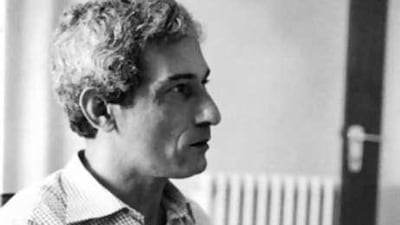A 30-year-old murder mystery case has been reopened with the news that the Metropolitan Police is appealing for witnesses to the murder of a Palestinian cartoonist who was gunned down in London in 1987 to come forward.
The case of Naji Al Ali, who was 51 and the father of five, has been relaunched by the London force, who are looking for fresh information about the gunman and another man who were seen escaping the scene of the killing in a Mercedes.
A controversial figure, Al Ali’s cartoons depicted the plight of the Palestinian people through a character known as Handala, a 10-year-old barefoot refugee child.
Prior to the attack, Al Ali received a large number of death threats and his family say that he was murdered for his “passion for art, politics and the Palestinian people”.
The political cartoonist was a marked man at the time of the shooting due to his criticisms of Arab political leaders, the Israeli state and the Palestine Liberation Organisation (PLO).
Al Ali was shot in the back of the neck on July 22, 1987 as he walked to the offices of Kuwaiti newspaper Al Qabas in Knightsbridge, London.
Witnesses reported that the gunman, who they said appeared to be Middle Eastern and in his mid-20s, had been following Al Ali for about 40 seconds before he shot him from behind.
The gun used was a Russian-made 7.62 Tokarev pistol, which was found dumped in Paddington almost two years after the murder.
_______________
Read more:
_______________
A witness reported seeing another man getting into the driver’s seat of a silver-grey, left-hand drive Mercedes shortly after the incident. Witnesses said that man was in his 50s and also of Middle Eastern appearance.
Commander Dean Haydon, head of the Met’s counter-terrorism command, said: "The gunman was seen following Mr Al Ali for about 40 seconds before he shot him.
“We believe that he may have arranged to meet the man seen driving the silver-grey Mercedes straight after the murder. We believe that this driver was seen hiding the weapon in his coat, intending to dispose of it.”
Al Ali remained in a coma for just over a month until he died in hospital on August 29.
At the time of the attack, commentators suggested he was killed as part of a PLO campaign to silence its critics in Europe and the Middle East, although the PLO have denied this.
The murder took place during a period starting in the early 1970s when London was a hub for violence linked to political troubles in the Middle East, with individuals travelling from across the world to attempt assassinations in the British capital.
The notorious international terrorist Carlos the Jackal, who was brought up in the city and studied at the London School of Economics, attempted to murder British businessman Joseph Sieff, the chairman of Marks & Spencer and vice-president of the British Zionist Federation, in 1973, and also attempted to pull off a failed bomb attack on the Bank Hapoalim in Mayfair the following year.
In 1978, the former ex-prime minister of Iraq, Abd ar-Razzaq an-Naif, was killed after an assassination attempt in Park Lane, London which was carried out by a hitman sent by the then Iraqi leader Saddam Hussein.
The attempted assassination of Israeli ambassador to the UK Shlomo Argov four years later, carried out by a gang reporting to Fatah founder Abu Nidal, led to the 1982 invasion of Lebanon.
Al Ali’s son Khalid said of his father: "Obviously many people were unhappy with his cartoons throughout his career: that could range from, obviously Israel as the enemy, and Arab leaders and Arab governments, including Palestinian leadership."
"There were always threats, there were always problems with his cartoons but this did not stop him from actually drawing."
The Met has released an updated artist’s impression of what the suspected killer may look like today, based on a previous impression drawn at the time of the crime 30 years ago.
Mr Haydon said: “We have previously reviewed this case and followed a number of lines of inquiry which have not resulted in us identifying these two men."
“However, a lot can change in 30 years — allegiances shift and people who were not willing to speak at the time of the murder may now be prepared to come forward with crucial information.”

